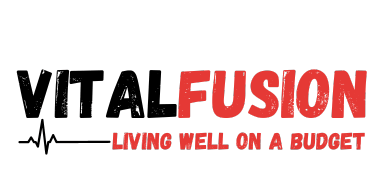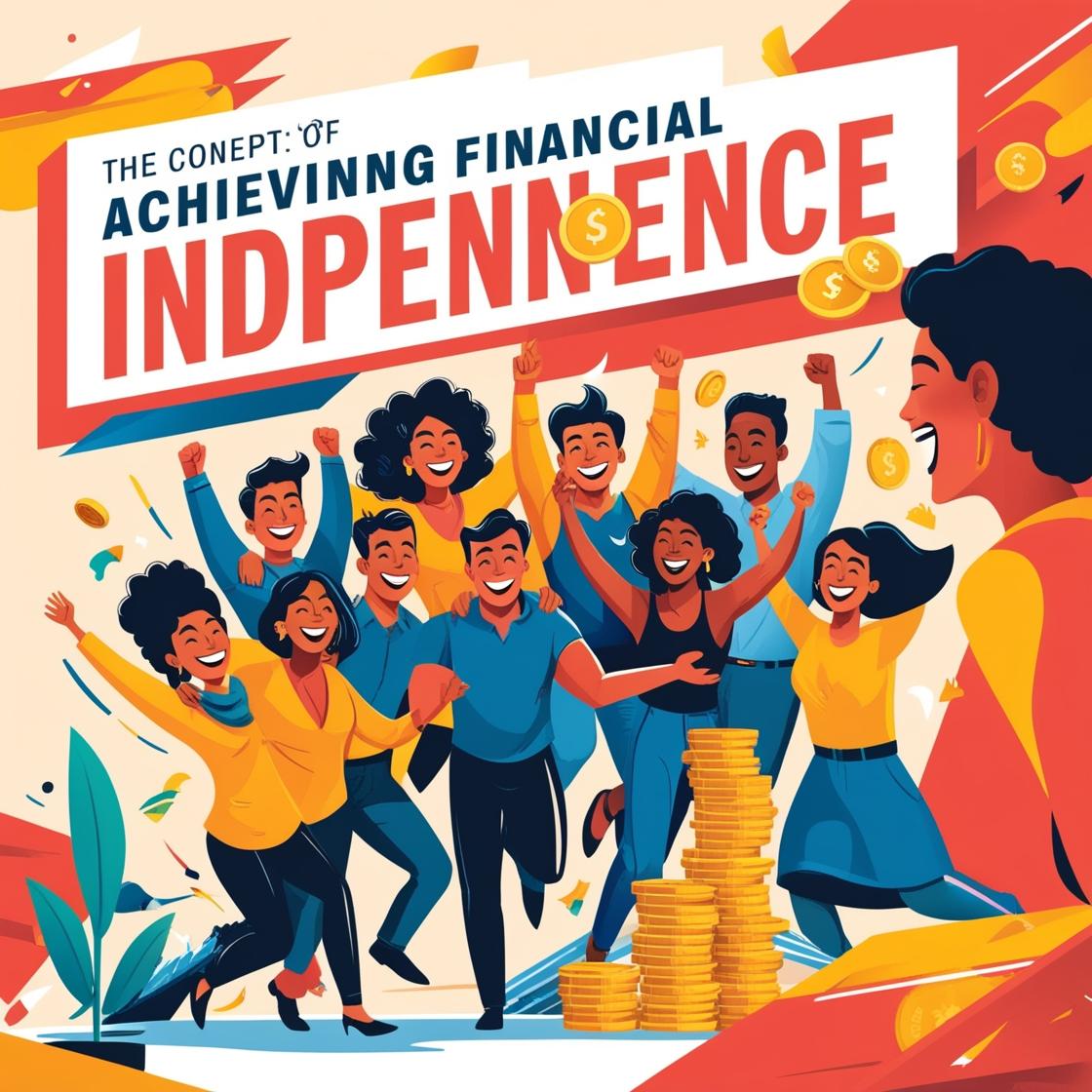Key Takeaway: Achieving financial independence on a budget is possible with disciplined saving, smart investing, and lifestyle optimization. By following these 8 steps, you can build wealth and secure your financial future, even with limited resources.
Table of Contents
Are you tired of living paycheck to paycheck? Dreaming of a future where money worries are a thing of the past? You’re not alone. The good news? Financial independence isn’t just for the wealthy elite. With the right strategy and mindset, you can achieve it too – even on a tight budget.
In this guide, we’ll walk you through 8 practical steps to help you break free from financial stress and build a secure future. No get-rich-quick schemes here – just solid, actionable advice that works in the real world. Ready to take control of your finances? Let’s dive in.
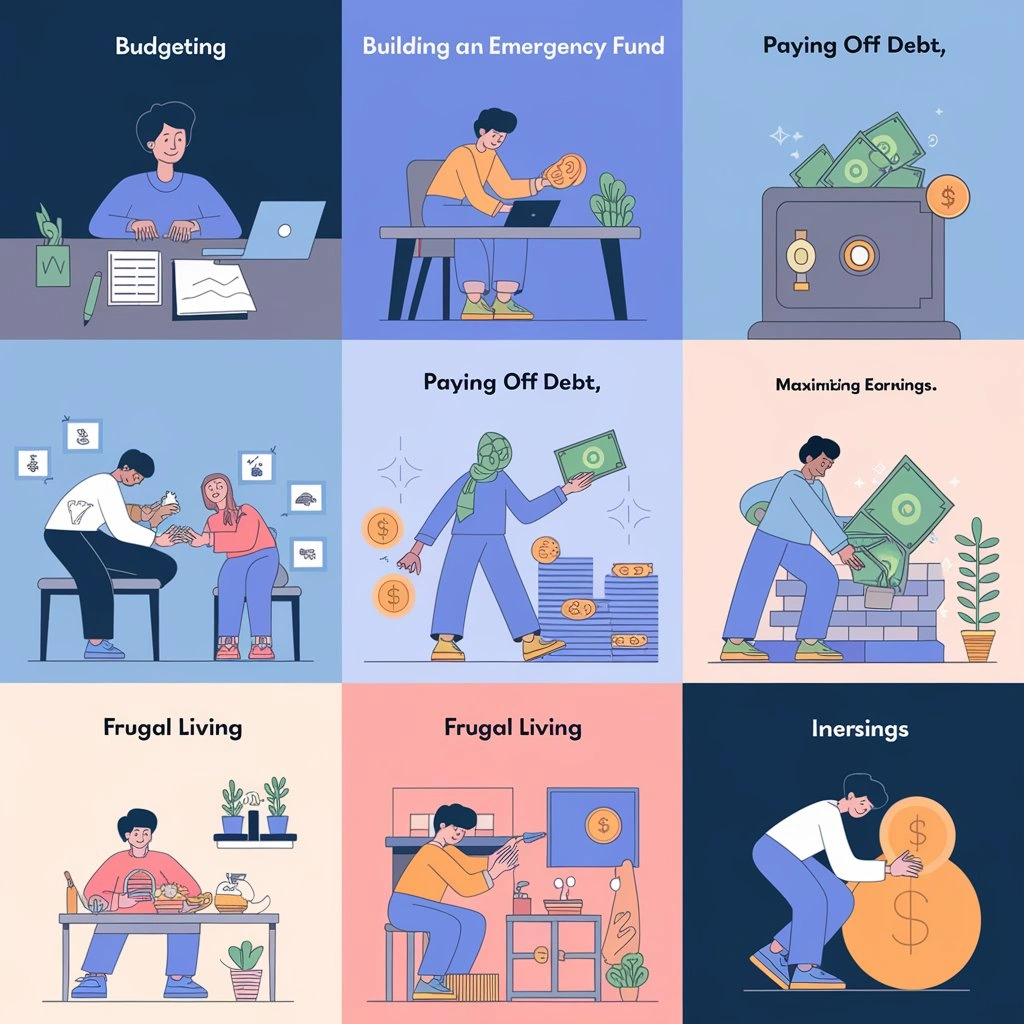
1. Master the Art of Budgeting
The foundation of financial independence is knowing exactly where your money goes. It’s not about restricting yourself – it’s about empowerment. Learn how to create a budget that saves.
Create a Detailed Budget
Start by tracking every single expense for a month. You might be surprised where your money’s really going. Use a spreadsheet or a budgeting app like Mint or YNAB (You Need A Budget) to categorize your spending.
Implement the 50/30/20 Rule
This simple yet effective budgeting technique allocates your after-tax income as follows:
- 50% for needs (rent, groceries, utilities)
- 30% for wants (entertainment, dining out)
- 20% for savings and debt repayment
Cut Costs Creatively
Look for ways to reduce expenses without sacrificing quality of life:
- Negotiate bills (phone, internet, insurance)
- Use cashback apps and credit cards wisely
- Cook at home and meal prep to save on food costs
Remember, every dollar you save is a dollar closer to financial independence.
Look for ways to reduce expenses without sacrificing quality of life. For instance, use cashback apps wisely or prepare budget-friendly meals at home.
2. Build an Emergency Fund
Life has a way of throwing curveballs when we least expect them. An emergency fund is your financial safety net.
Start Small, Think Big
Aim to save 3-6 months of living expenses. Begin with a goal of $1,000, then build from there. Learn about setting up a robust emergency fund.
Automate Your Savings
Set up automatic transfers to your emergency fund each payday. Even $20 a week adds up to over $1,000 in a year.
Keep It Accessible, But Separate
Store your emergency fund in a high-yield savings account. It should be easy to access in a crisis, but not so easy that you’re tempted to dip into it for non-emergencies.
Having this cushion will give you peace of mind and prevent you from derailing your financial independence journey when unexpected expenses arise.

3. Eliminate High-Interest Debt
Debt is the arch-nemesis of financial independence. High-interest debt, like credit card balances, can keep you trapped in a cycle of minimum payments and mounting interest. Learn more about debt elimination strategies.
Prioritize Debts
List all your debts, focusing on those with the highest interest rates first. This is often called the “avalanche method” and can save you the most money in interest over time.
Consider Debt Consolidation
If you have multiple high-interest debts, consolidating them into a single, lower-interest loan can make repayment more manageable and potentially save you money.
Negotiate with Creditors
Don’t be afraid to call your creditors and ask for lower interest rates. If you have a history of on-time payments, they may be willing to work with you.
Increase Your Income to Accelerate Payoff
Look for ways to earn extra money specifically for debt repayment. This could be through a side hustle, overtime at work, or selling items you no longer need.
Remember, every dollar of debt you pay off is a step towards financial freedom. Stay motivated by tracking your progress and celebrating milestones along the way.
4. Maximize Your Earnings
While cutting expenses is crucial, increasing your income can supercharge your journey to financial independence. Learn more about top side hustles to add to your income stream.
Invest in Your Skills
Continuously learning and improving your skills can lead to promotions, raises, or better job opportunities. Look for free online courses, workshops, or certifications in your field.
Negotiate Your Salary
Many people leave money on the table by not negotiating their salaries. Research industry standards and be prepared to make a case for why you deserve higher compensation.
Start a Side Hustle
The gig economy offers countless opportunities to earn extra income. Consider:
- Freelancing in your area of expertise
- Driving for ride-share services
- Renting out a spare room on Airbnb
- Selling handmade items on Etsy
Passive Income Streams
Look for ways to earn money while you sleep:
- Create and sell digital products (e-books, courses)
- Invest in dividend-paying stocks
- Start a blog and monetize with ads or affiliate marketing
Remember, it’s not about working yourself to the bone. It’s about finding smart ways to increase your income that align with your skills and interests.
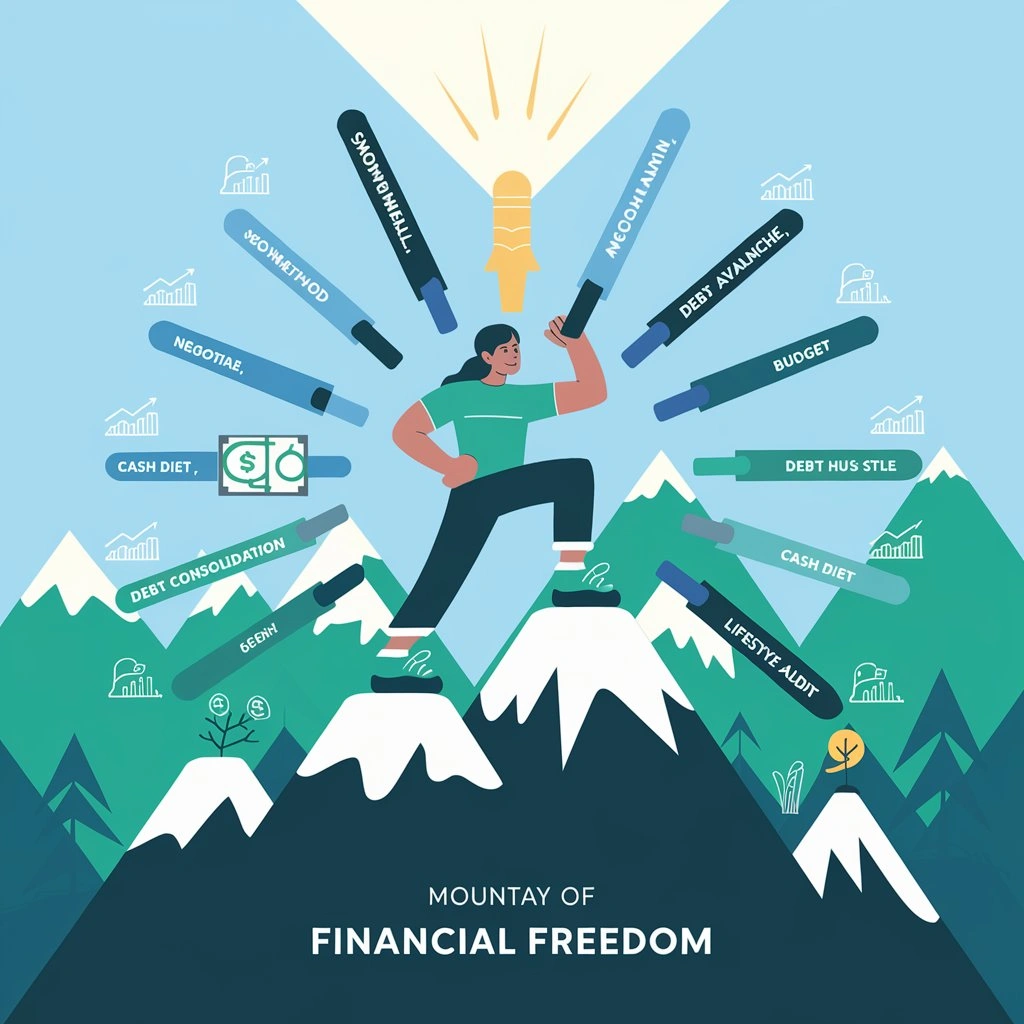
5. Master the Art of Frugal Living
Living frugally doesn’t mean living a life of deprivation. It’s about being intentional with your spending and finding joy in simplicity.
Practice frugality without sacrifice to build a lifestyle that aligns with your financial goals.
Embrace Minimalism
Declutter your life and focus on experiences rather than material possessions. You’ll save money and may find yourself happier and less stressed.
Practice Mindful Spending
Before making a purchase, ask yourself:
- Do I really need this?
- Will it truly improve my life?
- Can I afford it without compromising my financial goals?
Learn DIY Skills
From basic home repairs to cooking gourmet meals at home, DIY skills can save you a fortune over time.
Optimize Your Living Situation
Housing is often the biggest expense in a budget. Consider:
- Downsizing to a smaller home
- Getting a roommate
- House hacking (buying a multi-unit property and living in one unit while renting out the others)
Remember, frugality is not about depriving yourself. It’s about aligning your spending with your values and long-term goals.
6. Invest Wisely for Long-Term Growth
Investing is key to building wealth over time. Even with a limited budget, you can start growing your money through smart investment strategies.
Start with Your Employer-Sponsored Retirement Plan
If your employer offers a 401(k) with matching contributions, aim to contribute at least enough to get the full match. It’s essentially free money!
Explore Low-Cost Index Funds
Index funds offer broad market exposure with low fees, making them an excellent choice for beginners and seasoned investors alike.
Consider a Roth IRA
A Roth IRA allows you to invest after-tax dollars now and withdraw tax-free in retirement. It’s especially beneficial if you expect to be in a higher tax bracket in the future.
Educate Yourself
Before investing, take the time to understand basic investment principles. Resources like “The Little Book of Common Sense Investing” by John Bogle can be invaluable.
Automate Your Investments
Set up automatic contributions to your investment accounts. This takes advantage of dollar-cost averaging and removes the temptation to time the market.
Remember, investing is a long-term game. Stay focused on your goals and avoid making emotional decisions based on short-term market fluctuations.
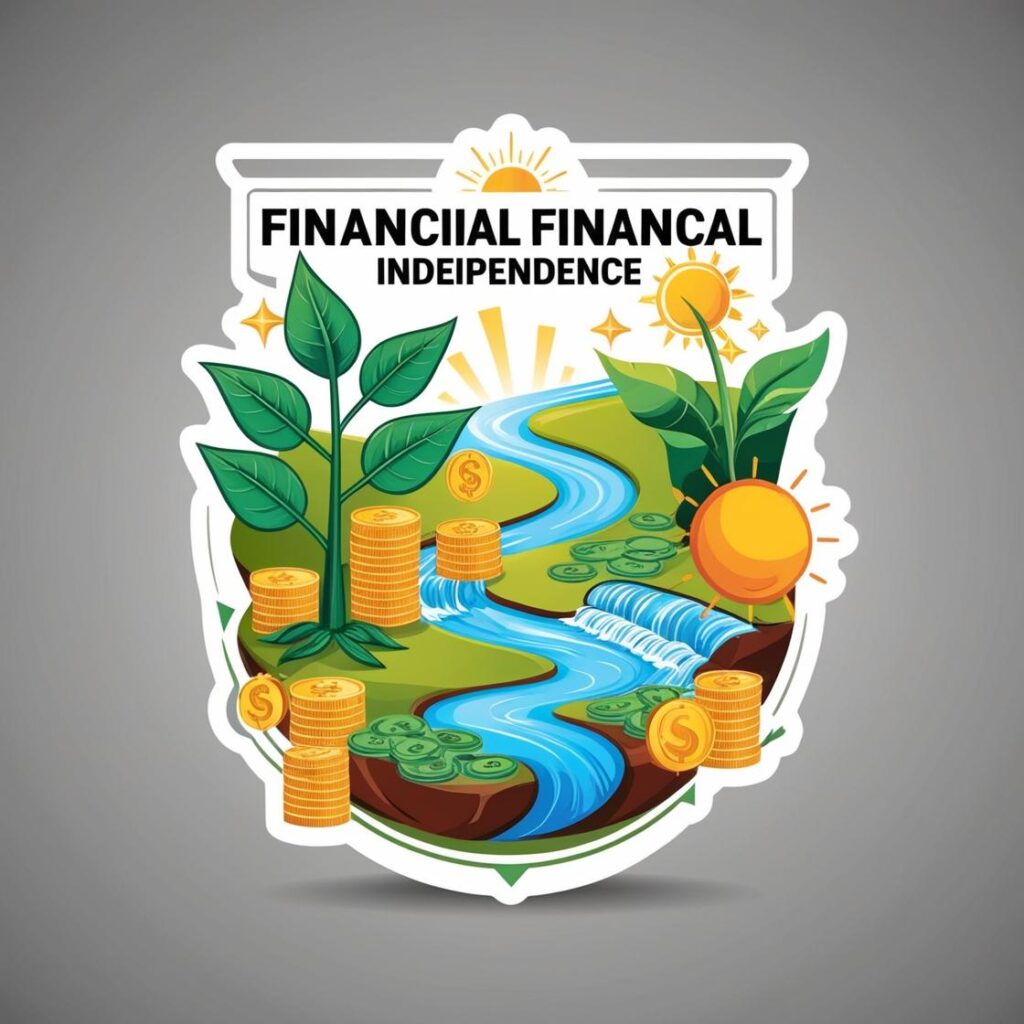
7. Create Multiple Income Streams
Diversifying your income sources can accelerate your path to financial independence and provide security if one source dries up.
Dividend Investing
Build a portfolio of dividend-paying stocks or ETFs for regular passive income.
Real Estate
Consider investing in rental properties or real estate investment trusts (REITs) for both income and potential appreciation.
Build an Online Business
Start a blog, YouTube channel, or podcast around a topic you’re passionate about. While it takes time to build an audience, the potential for passive income is significant.
Peer-to-Peer Lending
Platforms like Prosper or LendingClub allow you to lend money to individuals and earn interest.
Royalties
If you’re creative, consider writing a book, creating music, or developing software that can generate ongoing royalties.
Remember, diversification is key. Don’t put all your eggs in one basket, and be prepared to experiment to find what works best for you.
8. Continuously Educate Yourself
The world of personal finance is always evolving. Staying informed and continuously improving your financial literacy is crucial for long-term success.
Read Widely
Dive into personal finance books, blogs, and reputable financial news sources. Some recommended reads include:
- “Your Money or Your Life” by Vicki Robin
- “The Simple Path to Wealth” by JL Collins
- “The Millionaire Next Door” by Thomas J. Stanley
Attend Workshops and Seminars
Look for free financial education workshops in your community or online webinars hosted by reputable financial institutions.
Find a Mentor
Connect with someone who has achieved the level of financial independence you aspire to. Their insights and guidance can be invaluable.
Join Online Communities
Participate in forums like r/financialindependence on Reddit or join Facebook groups focused on personal finance and FIRE (Financial Independence, Retire Early).
Track Your Progress
Regularly review and update your financial plan. Celebrate your wins, learn from your setbacks, and adjust your strategy as needed.
Remember, financial independence is a journey, not a destination. Embrace the learning process and enjoy the growth that comes with it.

Conclusion
Achieving financial independence on a budget is not just a pipe dream – it’s a realistic goal that’s within your reach. By following these 8 steps – mastering budgeting, building an emergency fund, eliminating debt, maximizing earnings, embracing frugality, investing wisely, creating multiple income streams, and continuously educating yourself – you’re setting yourself up for a future of financial freedom and peace of mind.
Remember, the journey to financial independence is a marathon, not a sprint. There will be challenges along the way, but stay focused on your goals, celebrate your progress, and don’t be afraid to adjust your strategy as needed.
Start today. Take one small step towards your financial goals. Whether it’s creating a budget, setting up an automatic savings transfer, or reading a personal finance book, every action brings you closer to the financial future you desire.
What step will you take first on your journey to financial independence? Share your thoughts and plans in the comments below – your insight might just inspire someone else to take that crucial first step!
Frequently Asked Questions (FAQs)
- Q: How long does it typically take to achieve financial independence? A: The timeline varies greatly depending on factors like income, expenses, savings rate, and investment returns. Some achieve it in 10-15 years, while others may take 20-30 years. The key is consistency and dedication to your financial goals.
- Q: Do I need a high income to achieve financial independence? A: While a higher income can accelerate the process, it’s not necessary. Many people achieve financial independence on moderate incomes by maximizing their savings rate and making smart financial decisions.
- Q: What’s the difference between financial independence and retirement? A: Financial independence means having enough assets to cover your living expenses without needing to work. Retirement typically refers to leaving the workforce entirely. You can be financially independent and choose to continue working if you enjoy it.
- Q: How much do I need to save to be considered financially independent? A: A common rule of thumb is the 4% rule, which suggests you need 25 times your annual expenses saved. For example, if you spend $40,000 per year, you’d aim for $1 million in assets.
- Q: Is it possible to achieve financial independence while raising a family? A: Yes, but it may require more careful planning and budgeting. Many families achieve financial independence by prioritizing savings, living below their means, and involving all family members in financial decisions.
